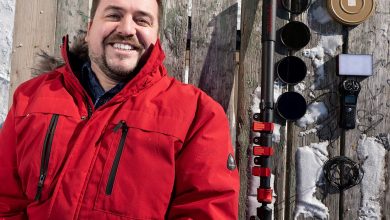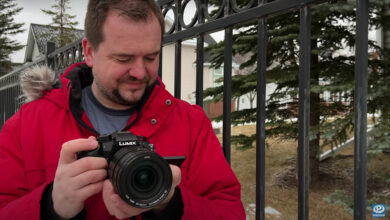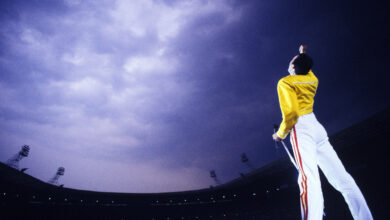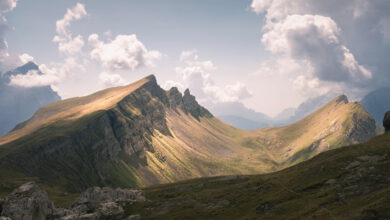Tripods for tough situations: We review the ‘waterproof and sandproof’ Leofoto Poseidon tripod
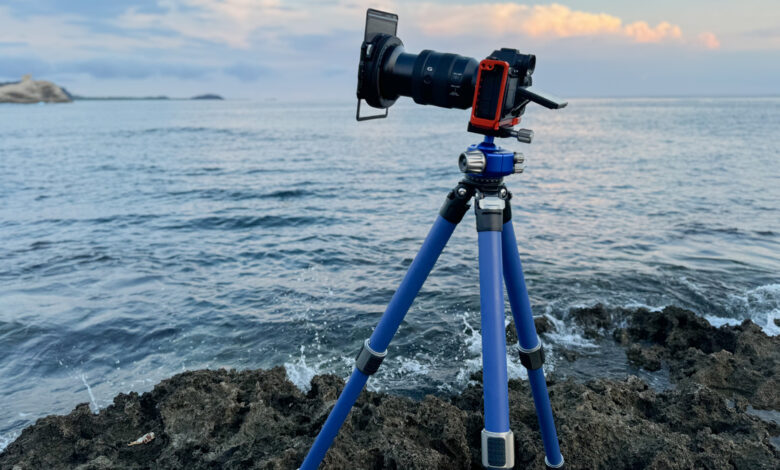
A tripod is a tool that always ensures that the job gets done and our cameras are safe. Now let’s see how this differently designed tripod can affect the way we travel and photograph nature.
For some photographers, a tripod is simply a tool to hold their camera in place, but for many others, a tripod is essential to getting the images they envision and at the same time protecting their equipment from unwanted accidents. This is why the tripod market is hardly ever saturated because even with the abundance of brands and variations around the world, photographers still have different uses for different types. Just like our camera equipment, tripods also require a fair amount of care and maintenance, especially if they are constantly exposed to the elements. Depending on the materials used on the tripod and how they are constructed, exposure to moisture, salt water, dust and sand can greatly affect their longevity and effectiveness in performing their tasks. Currently, this tripod from Leofoto is said to be water and dust/sand resistant and less susceptible to corrosion.
Poseidon by Leofoto
The Poseidon tripod line comes in two size variations, each with two ball head variations (colors). For this review, we’ll be looking at the larger version, which has a taller height and thicker carbon fiber leg rods, LP-324C.
Both variants are 4-section carbon fiber tripods with a flat center joint base and no center column. When folded, the LP-324C shortens to just 580mm (23 inches), which is significantly longer than a conventional tripod but still fits into the external tripod attachments of a camera bag. When all 4 sections are extended, it reaches a maximum height of 1,395mm (55 inches), tall enough to reach average eye level, maintain a comfortable working posture, and is tall enough for most outdoor situations.

On each leg joint there is a lever that you pull to unlock the angle stop so you can switch between three leg angles, allowing you to shoot from lower angles. Since there is no center column, the minimum working height is only 165 mm (6.5 inches) from the ground to the camera base. The LP-324C weighs just 1.95 kg (4.3 lbs) but has a maximum load capacity of 15 kg (33 lbs), even with the ball head capacity taken into account. Between the two leg joints is a 1/4” screw thread that can be used for additional accessories. Just below the center joint (opposite to the ball head) is another 1/4” thread for accessories such as a friction arm, phone clip, and/or accessory hook.

One of the most notable features of this tripod, if not the most notable, is the waterproof locking system that can be found on each twist lock. On the outside, it is a combination of textured metal pads and rubber (silica gel) for a good and smooth grip while the inside is lined with a titanium alloy tube stopper that prevents water and dirt from entering the legs and locks.
The sealed system can be judged by the sound of air entering and exiting the top of the tripod as they are collapsed/extended respectively. At the top of each leg is a removable rubber foot that can be unscrewed and replaced with the included titanium alloy studs for better traction, which also reinforce the seal when properly installed.

Both size variants of the Poseidon tripod come with the LH-40 ball head, which can be had in either the standard black or blue finish to match the legs of the tripod. The LH-40 comes with a main ball release knob supported by a smaller friction control knob on the other side, located just above the knob that controls the rotation of the entire head. The ball joint is connected to an Arca-Swiss-style quick release clamp with a bubble level indicator and release knob on top. The LH-40 has a maximum load capacity of 20kg, which is heavier than the tripod itself and means it can be used with other tripods with larger capacities for more demanding applications.

Applications and User Experience
The Leofoto Poseidon The tripod is clearly made for shooting conditions involving water, dust and sand. As the name suggests, it is a tripod designed for seascape photographers but can still work very well in other outdoor shooting situations. Because it does not have a center column, it can go very low while holding the camera upright, instead of other tripods that achieve low angles by reversing the center column.
This makes it very convenient for shooting seascapes with important foreground elements such as rocks and/or crashing waves. The downside of not having a centre column also means that the overall height is limited to what the legs can provide, but this is offset by the longer leg sections resulting in a similar maximum height to other standard tripods.

One of the most noticeable experiences when using the LP-324C is the overall feel. The twist lock is easy to grip and secure but doesn’t require much force to unlock. Then there’s the tactile and auditory experience of extending the legs. When the legs are unlocked from their folded configuration, they slide down smoothly due to gravity to a certain extent, and this was maintained even after leaving the legs exposed to sandy salt water for three days without washing them. In addition to the smooth feel, you can clearly hear the sound of air entering and exiting the legs from the top end. In addition to being a tactile cue, it’s also an indicator that nothing is actually entering and exiting the other parts of the tripod. This also implies that in the long run, it will require less cleaning and maintenance overall. Since the locking system prevents water and sand from getting into the joints of the parts, it means that less disassembly (or perhaps no disassembly at all) is required to remove any particles in the lock. And careful cleaning after soaking in salt water only means rinsing the outside.

At this point, Leofoto Poseidon It lives up to its name and is definitely a tripod you should consider if your photography involves a lot of elements. Although it is relatively lightweight, it can carry much heavier camera equipment than what is usually used in such shooting situations and is also flexible in terms of camera height and low angle. Overall, it offers worry-free use in the most extreme situations, allowing users to achieve the shot they envision without having to worry about camera equipment or tripods.
What I like
- Lightweight yet strong carbon fiber construction
- Titanium alloy tube locking system
- Water and sand resistant
- Quick switch to low angle configuration
What could be improved
- Accessory ports may be difficult to access for some tools
- No secondary scanning motion on the QR clamp of the ball head
